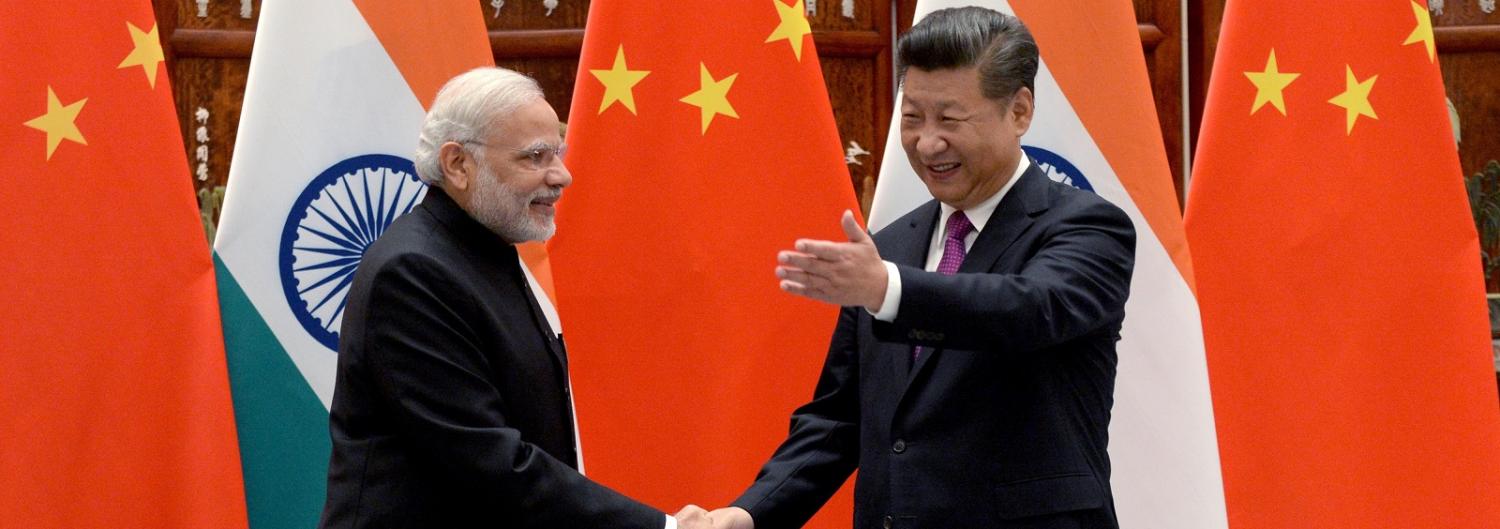Since 1991, leadership of the international order has been a monopoly: the US has been the only game in town. But, as the Belt and Road Initiative (BRI) summit in Beijing earlier this month made clear, Xi Jinping has stepped up his ambitions for China’s global role. The BRI may be couched in the sloganeering of win-win diplomacy - and reflect some heroic assumptions about financial risk in emerging markets - but we should not underestimate its ambition.
Not to be outdone India, which has very serious reservations about the BRI, has announced a program to build infrastructure and economic connectivity in Africa. In collaboration with Japan it proposes to create the ‘Asia-Africa Growth Corridor’. The stated aim is to drive growth and economic integration between the two continents. But it also a deliberate effort to counter-balance China’s growing influence in the developing world.
It’s clear the contest for international leadership is on again – thanks in part to leaders like Xi Jinping and Narendra Modi with a strong nationalistic streak and even a sense of destiny – and it is one reason why an increasingly integrated Asia is fast becoming the centre of the global power play.
Since at least 2007, when Coral Bell drew attention to the shift away from unipolarity and toward an Asia-centric multipolar order in the Lowy Institute Paper, 'The End of the Vasco da Gama Era', we’ve known the North Atlantic world was becoming less important. We have also known for some time that economic weight has been steadily shifting to Asia. Yet we have persisted in viewing this region as a set of sub-regions that, in geo-economic and geopolitical terms, tended to be discrete.
Now competition for leadership among Asia’s major powers is bringing together these once distinct theatres in a coherent Asian strategic system, thanks to the form that competition is taking. It is not just BRI, crucial though this will be for aligning the economic interests of key Central Asian and South Asian countries with those of China. In the Shanghai Cooperation Organization, the AIIB and the Conference for Interaction and Confidence Building Measures in Asia (CICA) China is laying out an institutional setting that will advance its interests, shape its international environment and link participants to a China-centric region. India too is both thinking about its interests in a pan-regional manner in its Act East policy and through participation in a new crop of regional institutions and mechanisms.
Globalisation has also contributed to a more integrated strategic system across the region. Prior to the 1990s, countries in the different sub-regions of Asia competed with each other for foreign investment and in export markets or remained largely aloof from global markets. With the internationalisation of production processes – in which firms moved from being manufacturers of goods to coordinators of supply chains – Asian states began to trade and invest with one another. In many cases, China’s massive and low-cost labour market became the preferred location for final assembly. This not only significantly enhanced China’s economic position; it also changed the alignment of economic and political interests in Asia.
Australia’s exploration of the Indo-Pacific construct acknowledged the impact of these developments. Focused principally on the growing importance of the maritime arteries of the production process, the notion was of particular salience given China’s dependence on maritime approaches for its well-being, both economic and security. With the BRI, China is not just exporting capital and improving its connectivity, it is increasing its strategic depth. The country’s vulnerability to maritime predation will be significantly reduced as it develops multiple means for goods, commodities and energy to enter and leave the PRC.
China’s continental power will be the heart of the integrated Asian strategic system but, like Europe in the 19th Century, no one country will be able to exercise hegemony or primacy. There will neither a return to the Sino-centric order, nor a replacement of US primacy. Instead, competition and contestation among Asia’s mega powers will be the defining feature of the region’s future.
Economic interdependence and nuclear weapons are likely to moderate the risks of competition creating systemic conflict. But even with these stabilisers, integrated Asia will be dangerous with the rising tide of nationalism, fuelled by increasing wealth, will bring non-rational forces to the surface. Equally, Asia’s great powers will also struggle to build a viable consensus about the purpose of a regional order. The absence of this necessary predicate to a stable international setting will make the future much more unsettled than the past few decades.
Australia has already begun to grapple with what a more integrated Asia means in its adoption of the Indo-Pacific concept. But it will need to widen its aperture to focus on the continental as well as the maritime dimensions of an integrated Asia security system. It will also need to turn that larger frame of reference into substantive strategic policy.
The liberal international order is coming to an end. America lacks the will, capacity and partners to sustain it as it has done in the past. As the BRI Forum, the AAGC initiative and other new gambits show, competition for influence is well and truly underway. Asia will be the main stage on which this contest for a new order will be played out. It will be risky, and it will be an environment much less friendly to liberal ideas than the order it is overtaking; the only order an independent Australia has known.
These ideas are explored further in ‘Integrated Asia: Australia’s Dangerous New Strategic Geography’ Centre of Gravity Paper No. 31. The author will be speaking on this topic in Canberra on 8 June and in Melbourne on 20 June.

